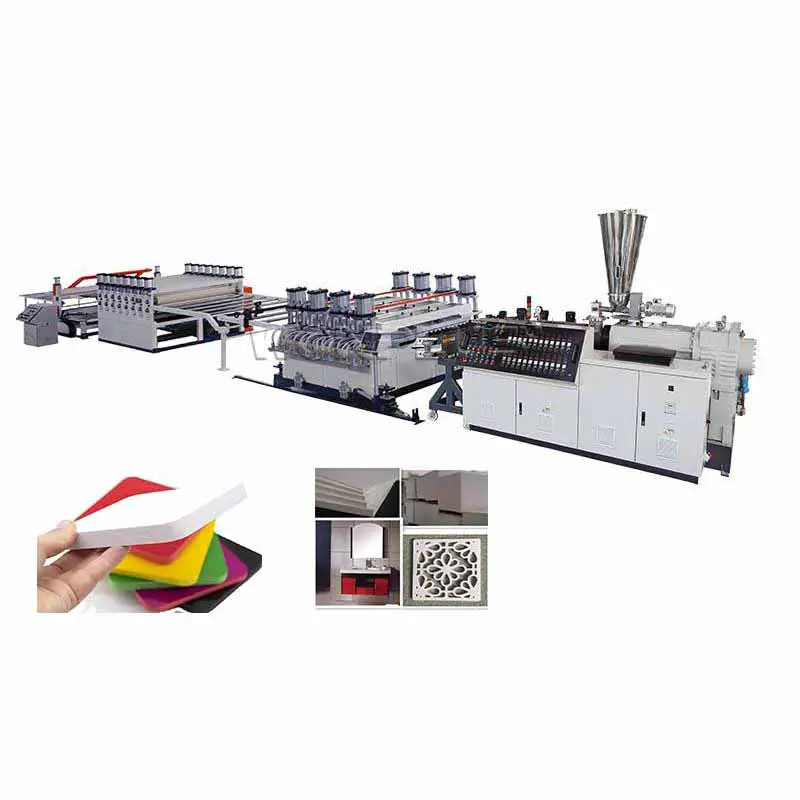The working principles of Second-hand PVC Foam Board Machine
2025-04-24
A second-hand PVC foam board machine works based on the same principles as a new one but may require more maintenance or checks due to wear. Here's a breakdown of how such a machine operates:
Working Principles of a PVC Foam Board Machine
1. Raw Material Feeding
Materials Used: Mainly PVC resin powder, along with stabilizers, foaming agents, lubricants, and other additives.
Feeding System: A hopper feeds the raw materials into the twin-screw extruder.
2. Plasticization (Extrusion)
Inside the twin-screw extruder, materials are heated and mixed.
Temperature is carefully controlled (usually between 160°C–200°C).
The screws rotate to melt and homogenize the material while slowly moving it forward.
3. Foaming Process
The foaming agent decomposes at high temperatures, releasing gas.
This creates a cellular structure inside the material — closed or semi-closed cells — leading to the foam effect.
This step is what makes the board lightweight and thermally insulated.
4. Shaping (Molding Die)
The hot foamed plastic is forced through a flat die to shape it into a board form.
This die determines the thickness and width of the board.
5. Calibrating & Cooling
The shaped foam board passes through a calibration table, where it is cooled using vacuum and water.
This sets the board dimensions and smooths the surface.
6. Haul-off Unit
Rollers grip the board and pull it continuously from the extrusion line.
This ensures consistent speed and quality.
7. Cutting
A cutter slices the continuous board into set lengths.
Some systems also include automatic stacking.

Considerations for Second-Hand Machines:
Check for wear in screws, barrel, and die head.
Electrical system and control panel integrity (older machines may lack modern automation).
Maintenance history is crucial for estimating reliability.
Calibration systems may be outdated — check accuracy.
If you are interested in our products or have any questions, please feel free to contact us.


